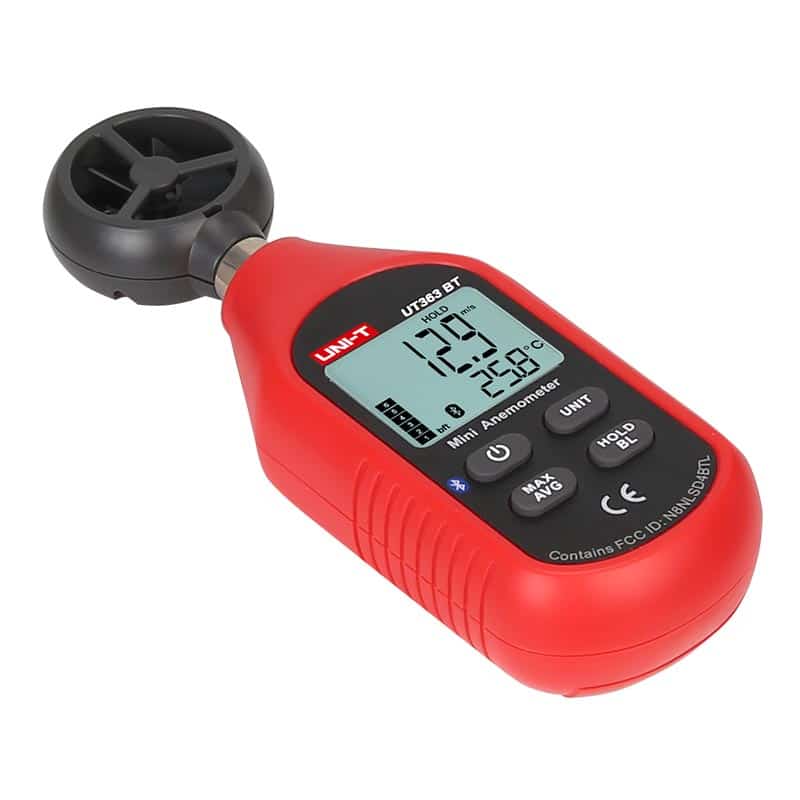Comparing Digital and Mechanical Anemometers: Which is Right for You?
All You Required to Understand About Anemometers: How They Work, Why They Issue, and Where to Use Them
Anemometers, however commonly forgotten in the world of scientific instruments, play an important function in numerous fields, providing important insights right into wind speed and airflow patterns. As we dig right into the ins and outs of anemometer innovation, we will certainly discover the internal functions of these tools, their importance, and the key considerations when choosing the right anemometer for details applications.

Anemometer Basics
A crucial tool made use of to determine wind rate and instructions, the anemometer plays a critical duty in weather forecasting and various markets. An anemometer generally is composed of three or 4 cups that revolve in the wind, a vane that directs into the wind, and sensors to track the turnings or motions.
There are numerous types of anemometers readily available, consisting of cup anemometers, vane anemometers, hot-wire anemometers, and sonic anemometers, each with its distinct attributes and applications. Cup anemometers are typically made use of for standard wind speed measurements, while vane anemometers are favored for directional measurements.
Principles of Anemometer Operation
Structure on the fundamental understanding of anemometer essentials, the concepts of anemometer operation elucidate the auto mechanics behind wind rate and instructions dimensions. Anemometers operate the concept of air movement influencing a sensor, triggering it to revolve. Mug anemometers, for instance, have 3 or more cups that record the wind, creating them to spin faster as the wind speed rises. The rotation rate is after that transformed into a wind speed measurement. Vane anemometers, on the other hand, utilize a tail or a probe that straightens itself with the wind direction, offering a dimension of wind direction based on the alignment of the sensing unit. Hot-wire anemometers count on a warmed cord that cools off as wind passes over it, with the rate of cooling establishing the wind rate. Ultrasonic anemometers action wind speed and instructions by examining the time it takes for ultrasonic signals to travel between transducers. Recognizing these concepts is crucial for accurate and dependable wind measurements in numerous applications.
Relevance of Anemometers
The importance of anemometers in meteorology and numerous markets can not be overstated. Anemometers play an essential duty in gauging wind speed and instructions, offering crucial information for weather projecting, climate research studies, environmental tracking, and aviation procedures. Meteorologists count on anemometers to gather exact wind information, aiding them understand climate patterns, predict tornados, and issue prompt warnings to the general public. In markets such as building, agriculture, renewable my response resource, and maritime procedures, anemometers are utilized to maximize processes, guarantee safety and security, and enhance performance. Wind farm drivers use anemometers to examine wind problems and take full advantage of electrical energy manufacturing from wind turbines. In the maritime field, anemometers help ship navigating by providing real-time wind information to captains, assisting them make informed decisions to guarantee risk-free trips. Overall, anemometers are crucial tools that contribute substantially to security, efficiency, and informed decision-making in meteorology and a large array of industries.
Applications Throughout Numerous Industries
In the sustainable power field, anemometers play an essential duty in examining wind problems for wind farm positionings, making sure optimum energy production. Industries like building and mining utilize anemometers to keep track of wind rates, essential for safety protocols, especially when functioning at elevations or in open-pit mines where strong winds can position hazards. In farming, anemometers help farmers in handling plant splashing by providing real-time go now data on wind speed to prevent drift.

Choosing the Right Anemometer for Your Demands
For general purposes, a mug anemometer is suitable for measuring wind rate, while a vane anemometer provides wind direction data. Hot-wire anemometers are excellent for reduced airspeed measurements, and ultrasonic anemometers provide high accuracy and toughness.

Final Thought
Finally, anemometers play a crucial role in measuring wind rate and instructions throughout various industries. Comprehending the concepts of anemometer procedure is crucial for picking the ideal device for particular needs. From weather forecasting to air travel, anemometers are crucial tools for making sure and collecting exact data safety and security in different applications. It is vital to think about the relevance of anemometers in order to make enlightened choices when picking one of the most appropriate device for gauging wind problems.
There are different types of anemometers available, including mug anemometers, vane anemometers, hot-wire anemometers, and sonic anemometers, each with its distinct features and applications. Mug anemometers are generally made use of for basic wind rate measurements, while vane anemometers are preferred for directional dimensions. Hot-wire anemometers are appropriate for low airspeeds, and sonic anemometers are optimal for high-precision measurements in research and commercial settings.Building on the foundational understanding of anemometer basics, the principles of anemometer procedure elucidate the technicians behind wind rate more tips here and instructions dimensions. For basic functions, a cup anemometer is ideal for measuring wind rate, while a vane anemometer supplies wind instructions information.